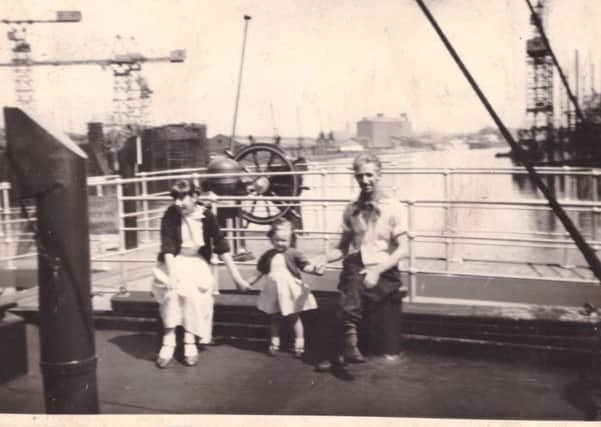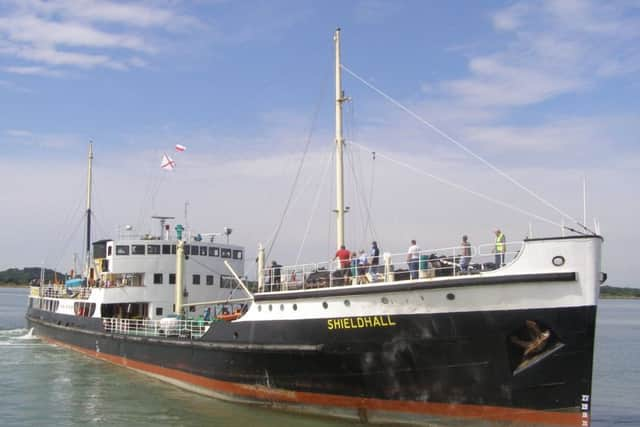Remembering the Clyde '˜sludge boat' cruises


Despite the cargo, thousands of passengers took advantage of the free excursions, which continued for over half a century.
One of the last vessels, which ended its run in 1976, is now celebrating 30 years of being reinvented as a historic cruise ship on the Solent in Hampshire.
Advertisement
Hide AdSS Shieldhall used to pick up parties of pensioners and other travellers at sewage works in Glasgow before sailing down the Clyde to empty her tanks off Garroch Head at the south end of Bute, in a tradition dating back to the First World War.


The ship had space for 80 passengers, who once included convalescing soldiers.
Maurice Meredith, one of the ship’s current engineers, said: “Uniquely, she was doing a social task of disposing of the sludge that Glasgow certainly did not want to know about but also contributing to the enjoyment of a group of people who perhaps would otherwise not have the chance of going down the wonderful Clyde estuary.”
There was even a song written about ship: “We’re the crew of the SS Shieldhall/Pull the chain and we’ll answer your call/Our terrible aroma/Will put you in a coma…”
However, Paul Hunter, who was the ship’s second mate in 1974, remembered it differently.
Hunter, 74, from Helensburgh, said: “There was no smell of sewage after we had left the plant.
Advertisement
Hide Ad“The ship was absolutely spotless – you could have eaten your breakfast off the deck. You wouldn’t know you were on a sludge boat.
“We opened the valves and made a wide sweep. All you saw was brown-grey water.”
Advertisement
Hide AdSS Shieldhall, now Britain’s largest working steam ship, was built in Renfrew in 1955 as one of the last of Glasgow’s “sludge fleet”. She was initially replaced by the Gardyloo, loaned from Edinburgh, then the Garroch Head until dumping ended in 1998.
When her Clyde career ended in 1976, the ship was sold to Southern Water for similar duties until being decommissioned in 1985.
She was saved from the scrapyard by enthusiasts in 1988, who formed a preservation society to restore the vessel.
The ship has been carrying day-trippers from Southampton since, with more than 3,000 last year.
The ship’s bridge and engine room have stood in for the Titanic in documentaries because of her similar steam-assisted steering gear.
Author Anthony Horowitz visited SS Shieldhall last year while researching his latest James Bond novel, Forever And A Day, which features extensive scenes aboard a 1950s steam ship. Her volunteer crew hope she will feature in the film version.
Advertisement
Hide AdTicket manager Nigel Philpott said: “SS Shieldhall is a unique seagoing ‘time capsule’. She provides a working example of steamship machinery typical of ships that plied the oceans between the 1870s and 1960s, after which they became all but extinct.
“Today, she is a regional flagship for the National Historic Fleet, placing her alongside vessels such as the Cutty Sark and HMS Victory – not bad for a humble Clyde sludge boat.”
Mary Smith, who recalls being shown round as a child by her father, stoker Joe Milligan, in 1957, said: “I’m delighted the old girl is still alive and kicking.”